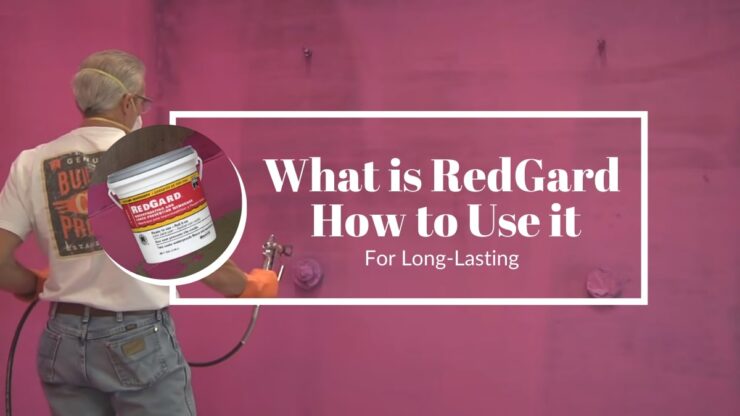Redgard is a waterproof, crack-prevention membrane used to protect tile installations. It is a popular membrane choice for both commercial and residential construction as it is easy to use and provides a moisture-resistant barrier. This article will take a look at what Redgard is, how it works, and how to use it.
Understanding the Purpose of Redgard
RedGard is a waterproofing and crack-prevention membrane that is used on walls, floors, and other surfaces to protect against moisture penetration and mold growth. It is a liquid-applied elastomeric membrane that can be used in both indoor and outdoor applications. The purpose of RedGard is to create a waterproof and durable barrier between the surface and the elements, which is especially important in areas prone to moisture such as bathrooms, showers, and basements. With the use of RedGard, homeowners can protect their surfaces from water damage and mold growth, ultimately prolonging the life of their structures.
Components
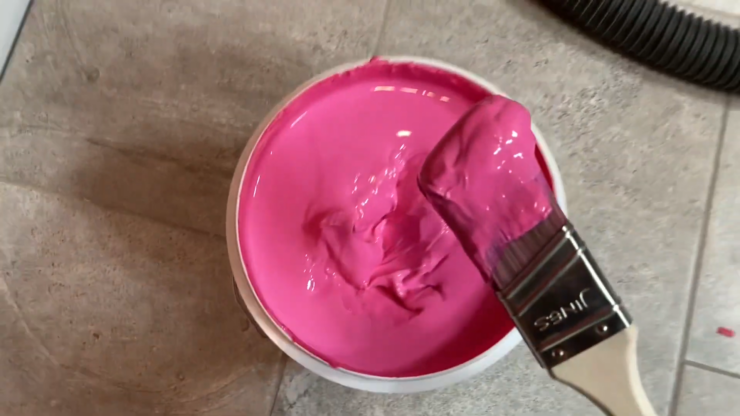
The components include synthetic polymers, portland cement, finely ground silica sand, and other proprietary additives. Polymers are one of the most important components of Redgard. They are responsible for the flexibility and durability of the membrane. Polymers are added to the mixture in a liquid form and are mixed with the cement to form a thick, pliable membrane. Cement is another crucial component of Redgard. It is used to bind the polymers together and to create a solid, strong membrane.
Cement is added to the mixture in a powdered form and is mixed with water to create a thick paste. Other additives are also added to Redgard to enhance its properties. These may include fillers, accelerators, and bonding agents. Fillers are used to improve the consistency of the mixture and to add strength to the membrane. Accelerators are added to speed up the curing process and bonding agents are used to improve adhesion to the substrate.
Benefits
Here are some of the benefits of using Redgard in your home renovation or construction project:
- Water-resistant: It creates a waterproof barrier that protects the underlying surfaces from moisture damage, including rot, mold, and mildew.
- Crack prevention: Redgard reinforces the surface and bridges hairline cracks to prevent water from seeping through.
- Easy to apply: It is easy to apply and can be rolled, brushed, or sprayed on. It dries quickly and can be tiled over within hours of application.
- Versatile: It can be used on a variety of surfaces, including cement board, gypsum, drywall, and plywood, and is compatible with a wide range of tile and stone types.
- Durable: Redgard is long-lasting and can withstand heavy use and exposure to water and other contaminants.
- Using it can save you time, money, and headaches by providing a reliable and effective solution for waterproofing and crack prevention.
How to Use Redgard
It is a waterproofing and crack-prevention membrane for use in wet areas like showers, tub surrounds, and steam rooms. It is easy to use and creates an effective waterproof barrier that can prevent future cracks from occurring. In this section, we will discuss how to use Redgard correctly, so that you can be sure you are using it safely and correctly.
Prepping the Surface
Before applying Redgard, it is crucial to adequately prep the surface to ensure maximum adhesion and effectiveness. Here are the steps to follow when prepping the surface for the Redgard application:
- Clean the surface thoroughly: Ensure that the surface is clean and free of dust, debris, and any other contaminants.
- Repair any cracks: Seal any visible cracks or gaps to prevent water from seeping through.
- Sand and smooth out imperfections: Sand any rough spots or bumps on the surface to even out the texture.
Once the surface is adequately prepped, follow the manufacturer’s instructions on how to apply Redgard properly.
Applying Redgard
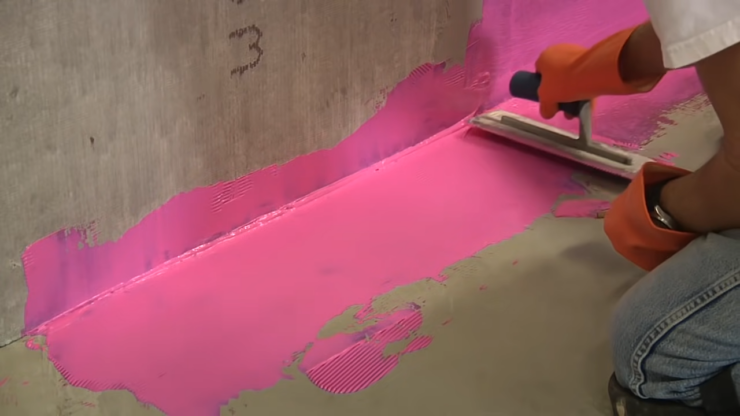
It creates a barrier between the substrate and tile or other flooring material being installed. Here is how to apply Redgard:
- Using a brush or roller, apply one coat of Redgard to the surface you want to waterproof or protect.
- Let the first coat dry for two to three hours.
- Apply a second coat using the same technique as in step two.
- Wait a full day for it to dry and cure before applying any additional layers or starting to install tiling or flooring over it.
Drying and Waiting Time
Here are the essential steps to follow while using it:
- After applying the first coat, wait for it to dry for a minimum of 2 hours.
- The drying time may vary based on the temperature and humidity levels in the room.
- Apply the second coat and wait for it to dry for another 2-3 hours.
- You can test if the coat has dried by touching a small patch of Redgard with your fingertip; if it feels tacky, it’s not dry yet.
- Once the second coat has dried completely, inspect the surface for any missed spots or thin areas.
- If you find any, apply another layer of Redgard and let it dry for an additional 2-3 hours. It requires a minimum of 48 hours to cure completely.
This total waiting time is critical for the membrane to provide an effective waterproof barrier.
Waterproofing the Surface
The application process begins with thorough surface preparation, involving the removal of any loose debris, dust, or contaminants that may hinder adhesion. Once the surface is clean and dry, RedGard is applied using a roller, brush, or trowel, ensuring even coverage and full saturation. A critical aspect of the application is achieving the manufacturer-recommended thickness, typically verified through the membrane’s distinct red hue.
In areas with increased moisture exposure, such as corners and joints, reinforcing fabric or mesh may be used in conjunction with RedGard to further enhance waterproofing performance. Upon application, RedGard’s elastomeric polymer and cementitious components work together to create a flexible, tenacious, and water-resistant membrane that effectively bridges cracks and accommodates building movement.
As the membrane cures, it forms a durable, impermeable barrier that prevents moisture penetration, thus preserving the structure’s integrity and prolonging the lifespan of tile installations. The RedGard waterproofing system offers an efficient and reliable solution for safeguarding surfaces against the perils of water damage and cracking, ensuring the durability and longevity of construction projects.
Compatibility with Tiling and Flooring
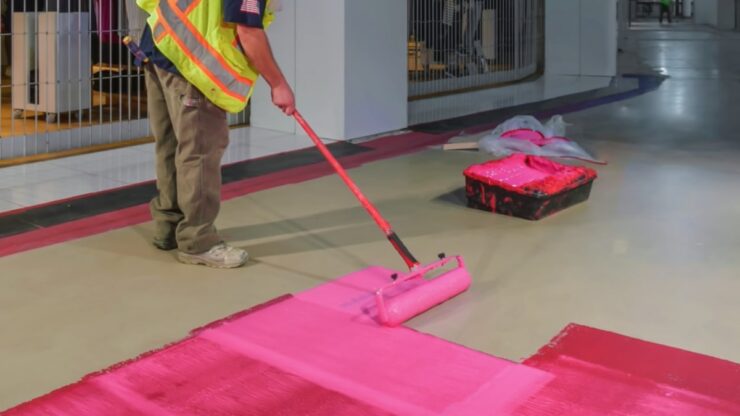
It is compatible with different surfaces, including concrete, cement backer board, gypsum-based products, and plywood. Here’s how to use Redgard in your tiling and flooring project:
- Prepare the surface by cleaning it and removing any loose material.
- Ensure that the surface is stable, level, and dry before applying the Redgard.
- Apply it with a brush, roller, or spray, following the instructions on the container.
- Allow it to dry according to the manufacturer’s instructions before applying the tile or flooring material.
It is known for its versatility, affordability, and ease of use, making it an excellent choice for DIYers and professionals alike.
Redgard Vs. Traditional Waterproofing Methods
One of the main differences between these methods is that RedGard is a liquid-applied membrane that can be easily rolled or brushed onto surfaces, creating a seamless and watertight barrier. Unlike traditional waterproofing membranes, which require a separate adhesive, it has an acrylic adhesive built into it that creates a strong bond with most surfaces. Its elasticity allows for movement without cracking, making it an ideal solution for areas that are prone to movement, such as concrete slabs.
When using RedGard, it is essential to follow the manufacturer’s instructions carefully, ensuring that the surface is clean and dry before application. Typically, at least two coats are required to achieve a fully waterproofed surface. One of the notable benefits of using it is that it dries relatively quickly, allowing for the project to be completed faster than with traditional waterproofing methods. So, if you want to save time and effort, RedGard is a great option.
FAQs
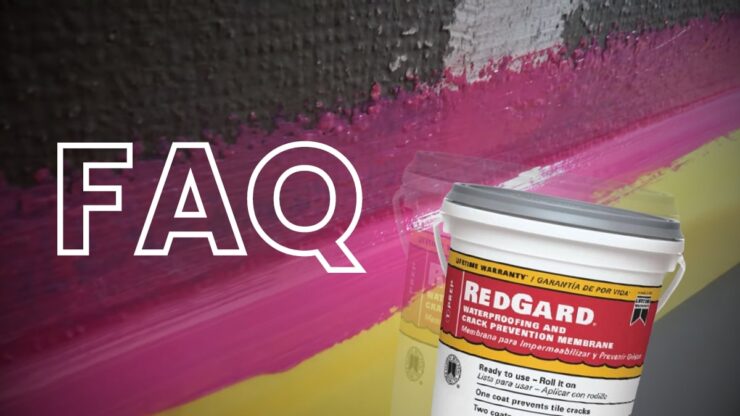
Can RedGard be used outdoors?
Yes, it is suitable for both indoor and outdoor applications, providing a durable and water-resistant barrier for various tile installations.
Can I paint over RedGard?
It is not designed as a paintable surface. It should be covered with tile or other appropriate finishing materials to ensure long-lasting performance.
Can I use RedGard in a steam room or sauna?
Yes, it is suitable for use in steam rooms and saunas, offering excellent waterproofing and crack-prevention properties.
How do I clean up after applying RedGard?
Clean tools and equipment with water immediately after use. Once it has dried, it can be difficult to remove from tools and surfaces.
Is RedGard safe to use?
It is safe to use when following the manufacturer’s instructions and precautions. Ensure proper ventilation during the application, and wear appropriate protective equipment, such as gloves and goggles.
Can RedGard be used as a standalone waterproofing product?
It is designed as a waterproofing and crack-prevention membrane to be used in conjunction with tile installations. It should not be used as a standalone waterproofing product without a proper finishing material.
Where can I purchase RedGard?
It can be purchased at various home improvement stores, tile supply stores, or online retailers.
Conclusion
In conclusion, RedGard is an innovative waterproofing and crack-prevention membrane that offers a reliable and effective solution for tile installations in moisture-prone areas. Its unique elastomeric polymer and cementitious components form a flexible, durable, and water-resistant barrier that can accommodate normal building movement and resist tile debonding. By understanding the properties and application process of RedGard, homeowners and contractors alike can achieve long-lasting, durable tile installations that not only enhance the aesthetics of bathrooms, kitchens, and other moisture-prone areas but also safeguard the underlying structure against water damage, mold growth, and costly repairs. With proper surface preparation, correct application techniques, and adherence to manufacturer guidelines, RedGard stands as a game-changer in the world of waterproofing, ensuring the longevity and resilience of construction projects for years to come.
